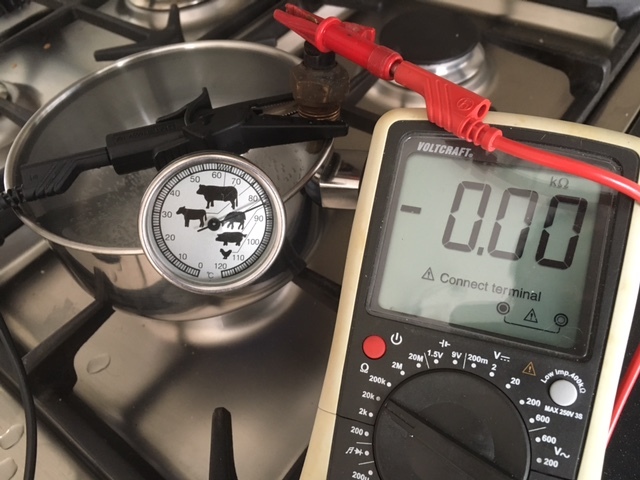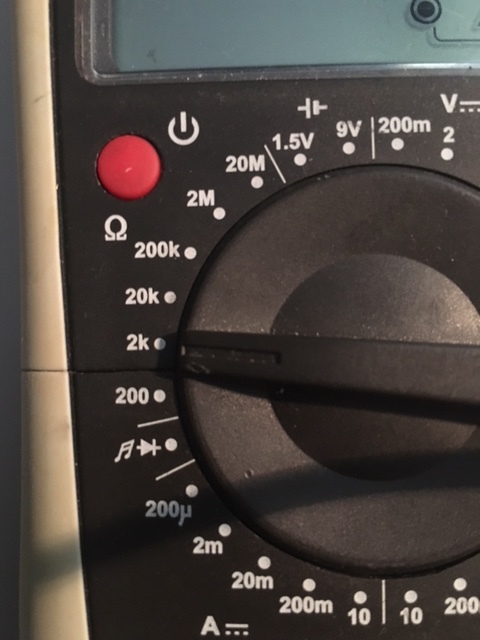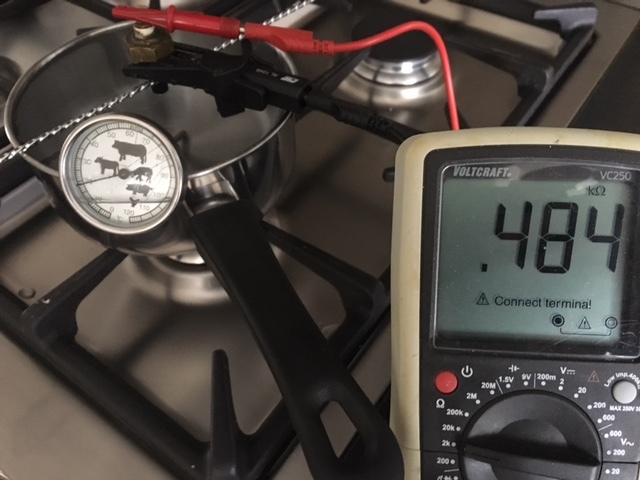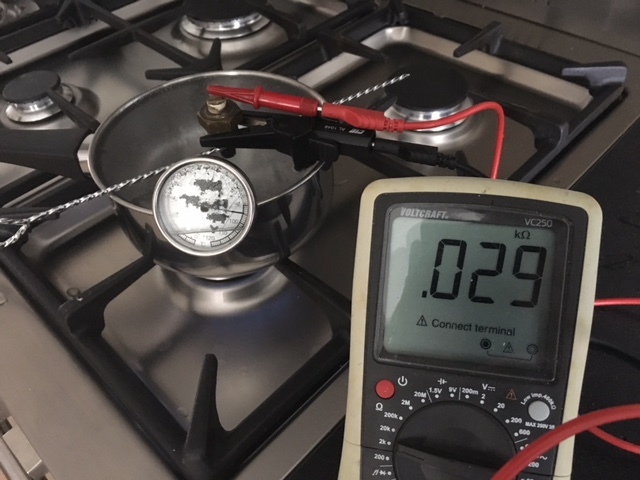This page has been translated with google translate, there may be errors in the stories.
Most sensors switch to ground. You should now measure no resistance between the central connection pin and ground. If you hang the sensor in a pot of boiling water, the resistance should drop to zero.
You can test the wiring by disconnecting the switch wire from the sensor and holding it against ground. Your alarm should then go off.
Measure the sensor.
With a multimeter you can also measure a sensor if you set the multimeter to resistance.
I have a sensor that makes contact at a certain temperature, there is a light on the dashboard and a sound signal is given when the contact is made in the sensor.
The test setup on photo1 shows when the sensor does not make contact, multimeter no 1 on. In picture 2 the multimeter indicates a resistance of 0 and thus makes contact. The contact at this sensor is made at a temperature of 85 degrees.


Check the cooling water sensor with a multimeter. (for temperature meter)
You can check the cooling water sensor with a multimeter if it is set to 2K.
By hanging the sensor in a pan you can measure the different resistances with the corresponding temperatures. Please note, the values I have measured can differ per sensor brand, but the point is that the resistance decreases as the water gets warmer.
The black cable goes to the housing of the sensor and the red cable goes to the tab of the sensor where normally the often yellow wire goes to the dashboard.

When testing, set the multimeter to 2K Ω to test the sensor and take a meat thermometer to slightly compare the readings with those in the table below.

0.484 kΩ at 20 degrees.

0.484 kΩ at 20 degrees.
Chart
0.484 kΩ bij 20 graden
0.304 kΩ bij 30 graden
0.209 kΩ bij 40 graden
0.149 kΩ bij 50 graden
0.104 kΩ bij 60 graden
0.079 kΩ bij 70 graden
0.072 kΩ bij 80 graden
0.040 kΩ bij 90 graden
0.029 kΩ bij 95 graden





